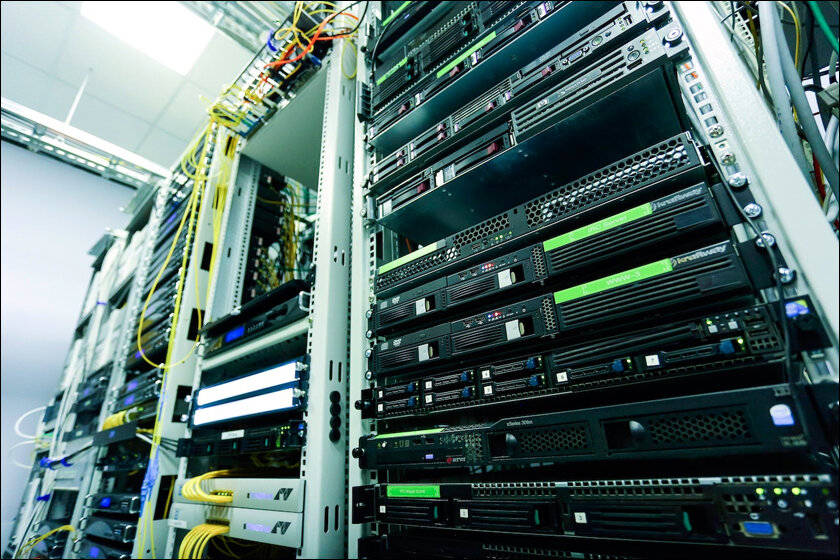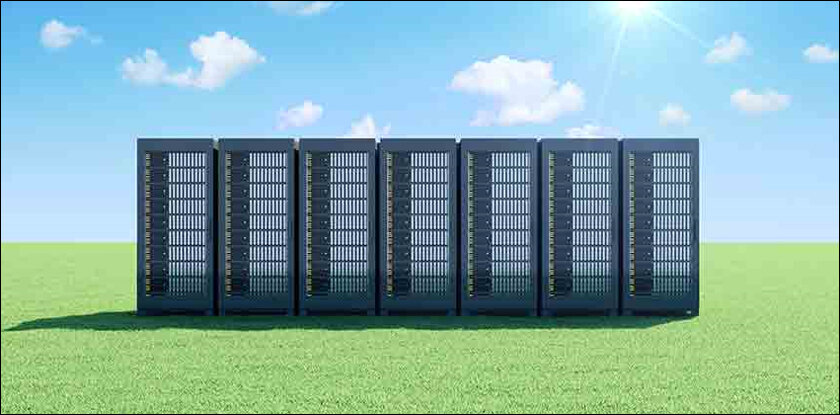Uma Iyer investigates green technology, its possibilities, perils, and everything in between.
Green is in! That is the mantra of the new age. When we look at Green Technology, we automatically think of Solar panels, solar flowers, and everything Solar. Green Technology in fact must span to basic decisions that are made by everyday people in how technology is viewed, consumed, and discarded.
Today’s technology life cycle:
Create
Build and Scale
Consume
Dump!! (Rarely recycle)

This spans across information consumption (read Data article), hardware and software. The situation is escalating. While we are moving to electric cars, the mining that affects the earth is always questionable to produce the batteries. Every technological advancement always comes with a cost and that cost is invariably to the earth. Let us look at some of those.
Hardware: One of the most visible wastes apart from plastic is computer hardware, mobiles, and the miles of wiring.
“I have disposed of about 20 phones in 20 years and laptops and other hardware. The number of wires I still have in the view that I may in some case need, far outweighs my need to get rid of them. As soon as I get rid of them, I will need to buy the same or I will not find what I need.” How many of us have felt this quandary that Anupama Shukla faces?
More than gadgets, wires are the biggest cause of pollutants. There is no clear method of recycling or repurposing the wires, here is a process of Collection, Disassembly of items like motherboards, graphics cards, RAM sticks, hard drives, battery etc.
The process also has a key phase of Recovery of valuable earth metals in some cases precious metals like copper etc. which are in short supply. After Purification they create a circular economy. “Reuse of tin, silicon, iron, aluminum, and a variety of plastics that are present in bulk in computers or other electronics can reduce the costs of constructing new systems. Components often contain lead, copper, gold, and other valuable materials suitable for reclamation.” – Recycle Specialist.

For the uninitiated, recycling hazardous waste, including heavy metals and carcinogens, prevents from entering the atmosphere, landfill, or waterways. While electronics consist of a small fraction of total waste generated, they are far more dangerous. There are stringent regulations that must be adhered to by the organizations to ensure sustainable disposal of electronic devices and appliances, the most notable being the Waste Electrical and Electronic Equipment Directive of the European Union. It is difficult for small organizations to align to the requirements; hence, it would be helpful to align with smaller providers and recycling centers to ensure adherence.
Dumping Hazard: Waste is typically exported to countries with lower standards for environment hazard management and short-term cost-effective solutions of selling outdated computers. Developing nations are viewed as dumping grounds which require to be managed.
Wiring: In the 1860’s telegraph wires were laid across the Atlantic which quickly moved to laying fiber optic wires carrying the data you see on your screen today. One never thinks about what happens to the cables, the wires, the aluminum, the steel, the plastic once the use ceases or they go defunct? Many companies (Green ones, upgrade them to make them fit for purpose or they engage with recycling companies to create new raw materials). It is estimated that over 94% of unused cables and 72k repeaters are abandoned in the seabed and are worth millions of dollars. It is sometimes difficult to find out which wires are defunct as well. CRS Holland, one of the wire recovery companies, has been shortlisted for a Dell Circular Economy People’s Choice Award for addressing this deep-sea challenge. e there is a carbon footprint assessment of the diesel fuel used to recover them, it is not seen to make a difference to deep ocean life, however the raw materials can be valuable.
Software and Data, the silent killers

While software does not directly affect the cycle, it does affect forms where software comes as a package. The CDs (Compact Disc) and packaged software are a passe’ however, there are still plenty of packaged items still circling the earth which will live on for years to come.
We are also gathering lots of data to power our AI (Artificial Intelligence) and machine learning model. This invariably helps propel innovative technologies and harness the intelligence captured in the form of raw data. The data centers and the systems that power it come with their own set of issues. The global data is said to grow from 33 Zetta bytes (ZB) to 175 ZB in 2025. It would require 80-90% of unstructured data to create a meaningful 5% of structured data. Analyzed statistics say that there is not enough power to compute the data meaningfully.

Energy is needed to compute. We are no strangers to solar, wind, hydroelectric, geothermal, and biomass. The largest Renewable energy companies are headquartered in Spain and Denmark, but other big players are based in China, the U.S., and Canada.
Sustainable investments are a philosophy taken by investors, banks, and financial instruments to ensure company’s environmental, social, and corporate governance (ESG) factors are considered. This means there would be long-term financial results not the cost of social impact and avoiding companies with conflict of interest with these very principles.
Who are the forerunners?

While great responsibility and revolution will be data-driven, without proper investment in green data center technologies to achieve both greater power and efficiency, we will not be able to capitalize the intelligence needed to create those revolutions.
A good example would be Uber. While the business model was to create a sustainable system to match a rider with a driver efficiently. However, the growth of the company will be stunted if the costs of powering these machines far outweigh the benefits the companies can achieve or scale. The obvious answer starts with the green data center– a. power usage efficiency b. infrastructure efficiency.
“Current data centers are estimated to consume up to 3% of the world’s total electricity. Much of this energy use is brought on by user behavior and a growing reliance on technologies and services that require data center power. One of the key culprits of this consumption is cooling systems. Servers typically run on 40% to 60% of power because it is hard to predict when data will hit the servers and need more cooling. But what if we could predict when data will hit servers and when it will go away?”
Big differences happen with small changes

A minimal change in system efficiency will cause a drastic improvement in the system’s overall temperature and hence the need for lesser cooling power.
a. AI and machine learning can be used to evaluate spike and peak traffic times and e.g., Boxing Day or Black Friday. This gets coupled with climate change and heat also causing data centers to get knocked offline.
b. Usage of better semiconductor technologies like silicon carbide and Gallium nitride can help consume less energy and smaller components. The erstwhile punch card, which became floppy has now become cloud tech.
c. Intelligent digital controls can be used to continuously monitor the health of the system, helping us take pre-emptive action before failure happens.
d. Ensuring that systems remain with the times and reduce complexity in designs and overheads and promoting shared ownership where possible.
e. Cooler systems mean additional reliability as well, where vertical power delivery is provided underneath the processors.
With Great Power Comes Great Responsibility, said a wise man! So, with Great Power there needs to be Great Efficiencies in the investment world.









